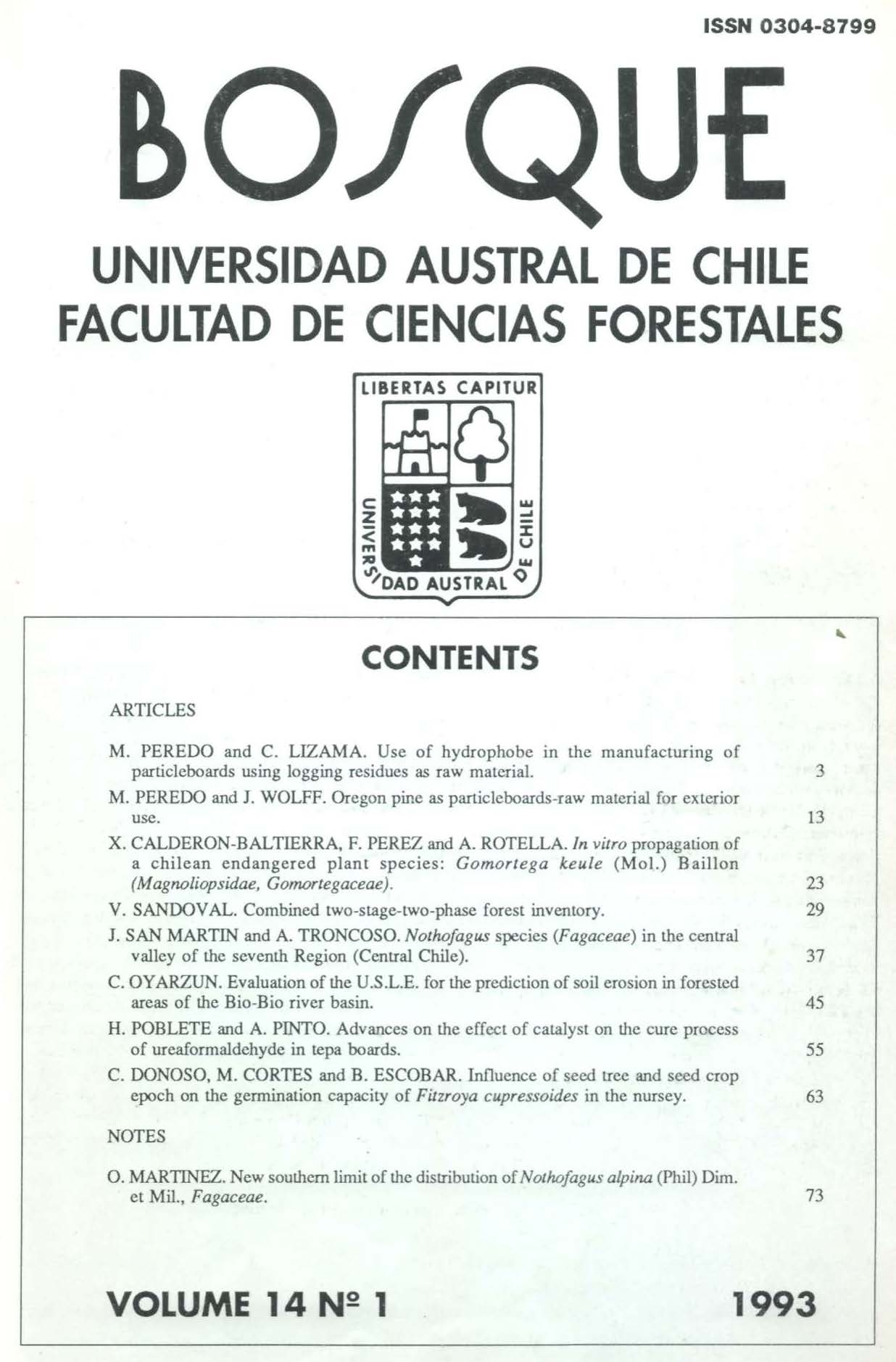Avances sobre el efecto del catalizador en el fraguado de ureaformaldehído en tableros de tepa
Contenido principal del artículo
Resumen
La madera de tepa (Laurelia philippiana Looser) presenta algunas características, como su baja densidad y su valor de pH, que resultan negativas en la fabricación de tableros de partículas con ureaformaldehído. En el presente estudio se corrigió el ambiente desfavorable para el fraguado, aumentando la cantidad de catalizador (NH4Cl). El cloruro de amonio (en solución al 20%) fue agregado en seis niveles diferentes: 0.5, 1.0, 1.5, 2.0, 2.5 y 3.0 (base resina sólida) y un testigo sin catalizador. Los resultados indican que al aumentar el nivel de catalizador se reduce el valor de pH y el tiempo de gelificación. La emanación de formaldehído también se vio significativamente disminuida al aumentar el contenido de catalizador.
Detalles del artículo
Cómo citar
Poblete W., H., & Pinto S., A. (1993). Avances sobre el efecto del catalizador en el fraguado de ureaformaldehído en tableros de tepa. Bosque, 14(1), 55–61. https://doi.org/10.4206/bosque.1993.v14n1-07
Número
Sección
Artículos

